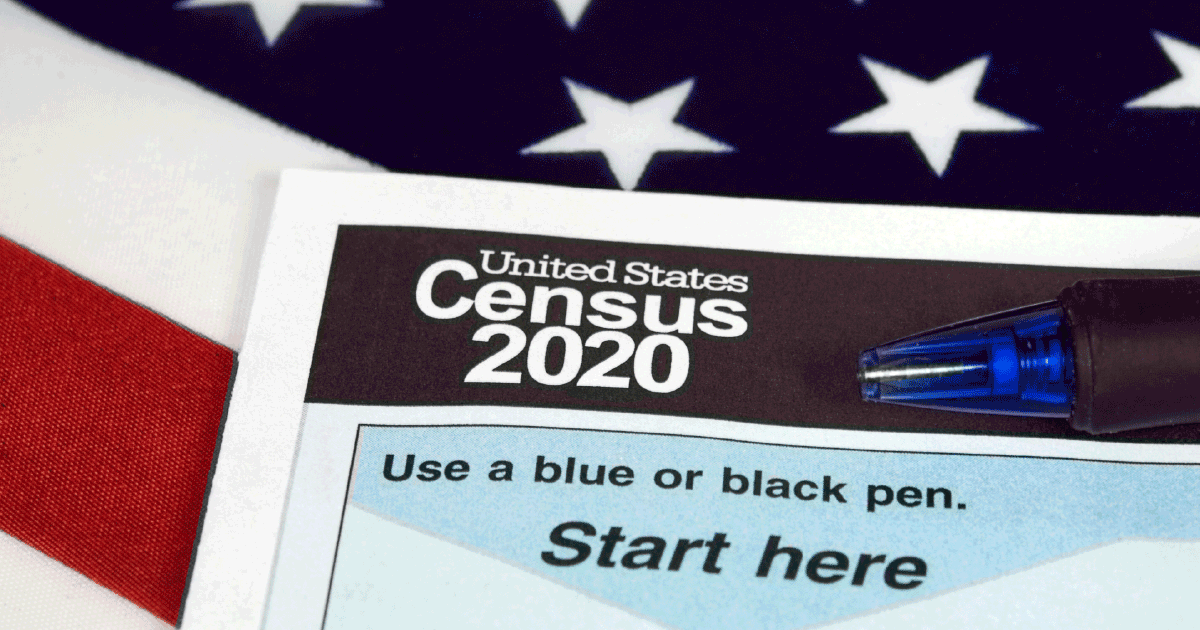
Learn more about the 2020 census and how data is used to determine representation and funding for local support services.
At the age of six, I went door to door in my small rural community with my mother as she sat down with our neighbors (and their pets) to help them complete the U.S. census. Twenty years later, I held a temporary position working in the basement of an old mill building performing quality assurance checks over the phone with citizens who had submitted their census information. Working as a research assistant at a rape crisis center, and now as the evaluation coordinator at NSVRC, I use census data to write grant proposals, conduct community needs assessments, and evaluate the effectiveness of programs and projects. For those doing program evaluation, publically available data sources like the U.S. census, which is conducted every ten years, and the American Community Survey (which is also arriving in mailboxes this month) can help us track progress toward reducing sexual violence in our communities.
I am biased about the value and importance of this constitutionally mandated survey. But I also understand the history of undercounting people of color and confidential census records being used to imprison people of Japanese descent in internment camps during WWII. While the 2020 census asks questions where same-sex couples can identify themselves for the first time in the history of the survey, we are still waiting for comprehensive questions about sexual orientation and gender identity to be included. With April 1 being Census Day, individuals and organizations are working hard to make sure that everyone is counted and safe during this year’s census. Grassroots tools are available for immigrant community inclusion. Tips have been gathered for survivors of domestic violence, including immigrant survivors, and survivors from the Asian American, Native Hawaiian, and Pacific Islander (AANHPI) population can participate fully and safely. Our partners at the National Network to End Domestic Violence created a critical guide on participation requirements and important privacy considerations for survivors of violence. Additionally, the Census Bureau is carefully watching coronavirus developments to keep households and census workers healthy during this process.
So why do we all care about the census so much? Simply put, it has the power to shape our future.
{“preview_thumbnail”:”/sites/default/files/styles/video_embed_wysiwyg_preview/public/video_thumbnails/xaXG7V3cttY.jpg?itok=BSO5P6wM”,”video_url”:”https://youtu.be/xaXG7V3cttY”,”settings”:{“responsive”:1,”width”:”854″,”height”:”480″,”autoplay”:0},”settings_summary”:[“Embedded Video (Responsive).”]}
The census is a central feature of our democracy. Data collected is used to determine how many congressional representatives each state gets in the U.S. House of Representatives and school and legislative district boundaries. Just as critical is the use of census data to determine how much funding communities get for essential public services like health care, education, housing, emergency services including domestic violence shelters and sexual assault programs, and infrastructure programs. Check out this infographic about how federal funds were distributed across the country in 2016 based on census data.
It’s hard to prioritize the 2020 Census as we are practicing social distancing, worried about friends and family members at increased risk for contracting COVID-19, and trying to keep the kids in our lives safe, or at least entertained, during a pandemic. But COVID-19 is also giving insight into priority infrastructure and service gaps that need to be addressed. I urge you not to just think about today, but what you and your community will need in ten years. You have the power to shape your community’s future by participating in the 2020 Census. Let’s build something positive together. Support your community members in responding with these share graphics that you can customize like this one.
For more information about how to respond to the 2020 Census, visit: https://2020census.gov/en/ways-to-respond.html
Resource Topics Community OrganizingResearch
